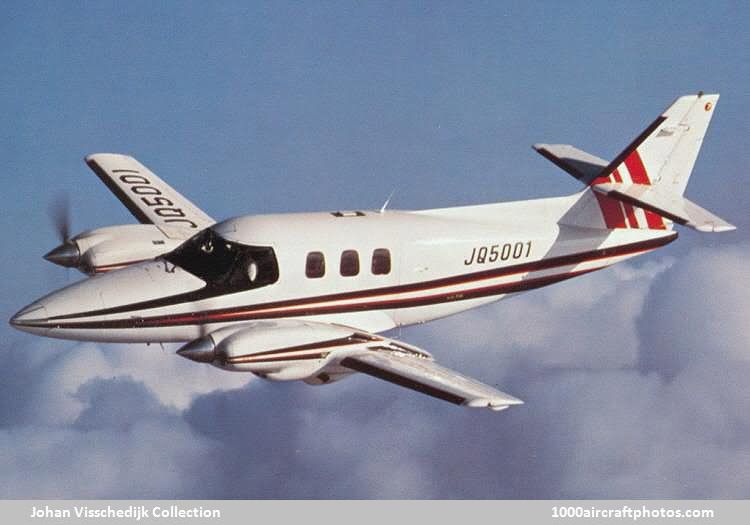12/31/2012. Remarks by Johan Visschedijk: "Fuji Heavy Industries of Japan began design of this pressurized wide-body twin-engine business aircraft in 1971 as part of a diversification program for their general aviation aircraft line. Three years later the company entered into an agreement with Rockwell International's General Aviation Division whereby the American company would share development, and would assume responsibility for marketing the aircraft in the US, and for final assembly from Fuji-produced parts.
Six development and certification prototypes were planned, three in each country. The pictured prototype Fuji FA-300 flew for the first time on November 13, 1975; the first Rockwell-assembled Commander 700 (as it was marketed in the USA) made its first flight on February 25, 1976. Following certification by the JCAB (Japan) and the FAA (USA) on May 16 and September 30, 1977 respectively, the aircraft replaced the heavier Commander 685 on the Rockwell production line.
With its capacious fuselage the FA-300/Commander 700 offers an uncommonly roomy cabin for six to seven passengers, with comfort rivaling that of larger aircraft. The pressurization system maintains sea level altitude conditions to 12,500 ft (3,810 m) and provided a 6,000 ft (1,830 m) cabin environment to 20,000 ft (6,100 m). Customer deliveries began behind schedule late in 1978, but the well engineered airframe proved heavy and underpowered with the 340 hp Lycoming piston engines, and, with a full load of passengers, range was severely compromised for all but short-haul journeys.
The fuselage is constructed mainly from aluminum alloy and the tail unit has swept-back vertical surfaces and shallow dorsal fin. There is a built-in airstair in the left side of the fuselage. In Japan an uprated 450-hp version, known as the Fuji FA-300 Kai (in the USA as Rockwell Commander 710), made its first flight on December 22, 1976, and since appeared with a number of modifications, including Whitcomb winglets. Rockwell did not take up their option to produce this aircraft.
By early 1980, 42 shipsets had been delivered to Rockwell, of which only 29 had been delivered to customers, and the American company announced the termination of its joint development and marketing agreement. Reportedly, including prototypes a total of 49 aircraft were produced. The pictured prototype was reregistered JA5258 after certification and development flying was finished, presently it is preserved at Narita's Museum of Aeronautical Sciences, Tokyo, Japan."
